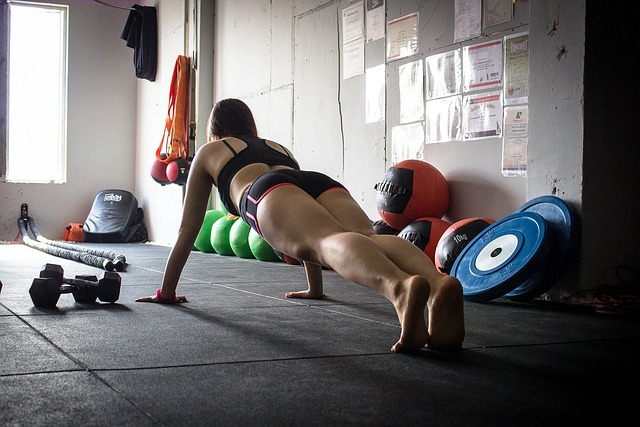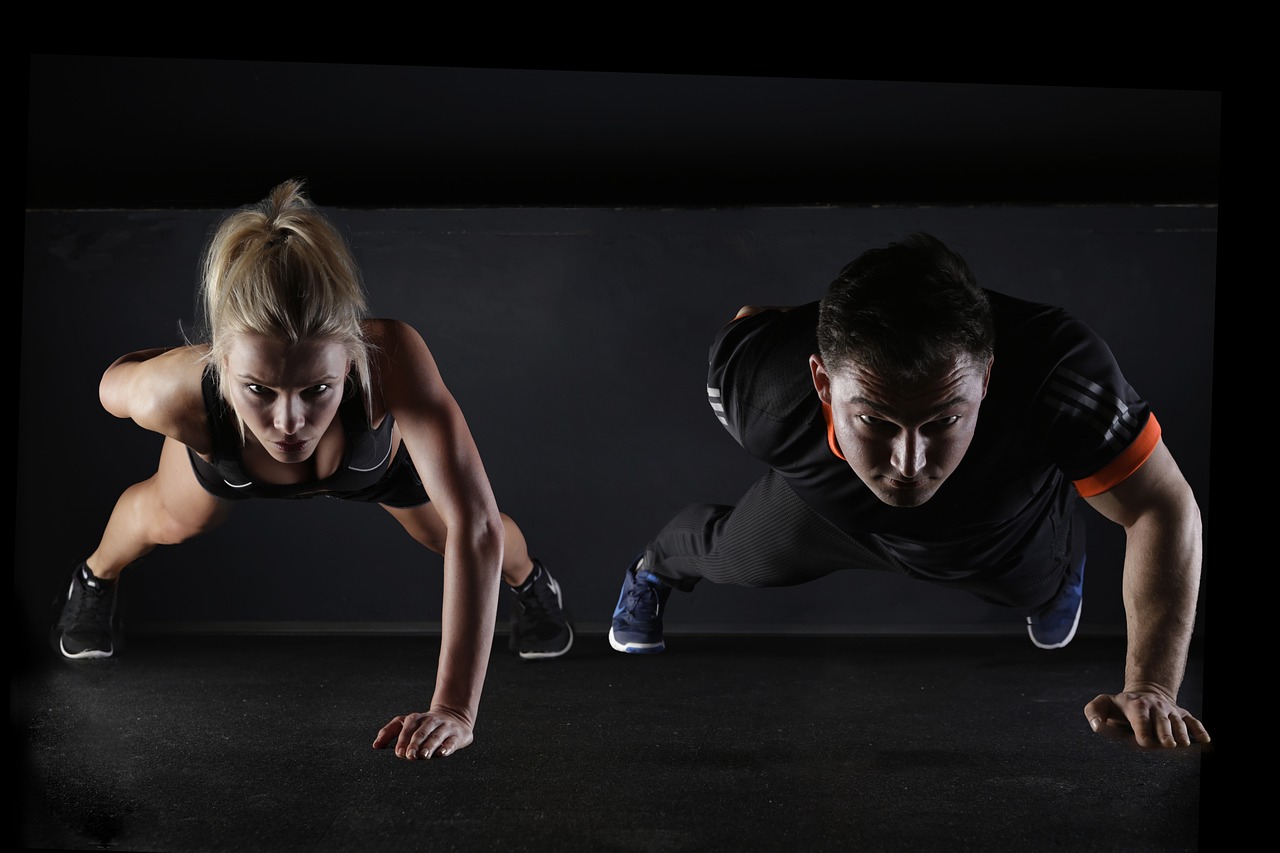Introduction: Bodyweight Workouts for Beginners
Welcome to the world of bodyweight workouts! This is a great place to start if you’re looking to get fit and healthy, but don’t have access to a gym or don’t want to spend money on expensive equipment. Bodyweight workouts are exercises that use your own body weight as resistance.
They can be done anywhere, at any time, making them a convenient and effective way to stay in shape. The benefits of bodyweight workouts are numerous.
They improve strength, flexibility, balance and endurance while also burning calories and building lean muscle mass. Plus, they are low-impact which means there’s less risk of injury compared to traditional weightlifting routines.
Why this guide is essential for beginners
If you’re new to working out or just getting back into it after a long time away, starting with bodyweight exercises is a smart choice. This guide will help you learn basic moves such as squats, push-ups and lunges that will improve your overall fitness level quickly and efficiently.
Even if you’re an experienced fitness enthusiast who’s used weights for years, incorporating these simple exercises into your routine can help shake things up and provide new challenges that will take your fitness game up a notch. So whether you’re looking to burn fat or gain muscle mass, this guide has got you covered with all the tools necessary for leveling up in no time!
Getting Started: Pre-Workout Preparation
Importance of Proper Warm-Up and Stretching
Before diving into any workout, it is essential to prepare your body for the physical strain it’s about to undertake. One of the most crucial steps in pre-workout preparation is warming up.
A good warm-up routine helps increase blood flow, raises body temperature, and loosens joints and muscles, preventing injury during exercise. A proper warm-up includes movements that are similar to those that you’ll be performing during your workout.
For example, if your workout includes squats and lunges, start with some simple leg swings or hip circles. Also, consider using foam rollers or massage sticks to target specific muscle groups before starting your warm-up routine.
Another important aspect of pre-workout preparation is stretching. Dynamic stretches are best before workouts as they help improve mobility and flexibility while also activating muscles group more effectively than static stretches.
Tips for Staying Hydrated During the Workout

Staying hydrated is essential for optimal performance during a workout session. Proper hydration helps regulate body temperature while helping transport nutrients throughout the body. However, different people have different hydration needs depending on their level of fitness and how much they sweat.
You should aim to drink water before you begin working out so that you’re hydrated from the start; this will help you stay energized longer throughout the session. A good rule of thumb is to drink at least 8 ounces every 15 minutes while exercising – but be sure not to drink too much at once as this can lead to an upset stomach or even nausea.
Taking time for pre-workout preparation helps get your muscles ready for physical exertion while minimizing any risk of injury during exercise sessions. Remember always ‘work smart not hard’!
Basic Bodyweight Exercises
Squats:
Squats are one of the most basic and effective bodyweight exercises. They target your glutes, quads, and hamstrings, helping you build lower body strength and endurance.
To perform a squat, stand with your feet shoulder-width apart and keep your back straight. Lower your body by bending your knees as though you’re sitting in a chair.
Make sure to keep your knees in line with your toes and don’t let them go past your toes. Your thighs should be parallel to the ground or lower if possible.
Then push yourself back up to the starting position. If you’re new to squats or find them challenging, modifications can help you work up to a full squat gradually.
One modification is the half-squat where you only go halfway down instead of all the way down. Another modification is using a chair or bench for support until you build enough strength to do it without support.
Lunges:
Lunges are another great lower body exercise that targets multiple muscle groups at once: glutes, quads, hamstrings, calves, hip flexors and core muscles. Stand straight with your feet hip-width apart before taking one big step forward with one leg while bending both legs so that each knee forms a 90-degree right angle as shown in this picture (insert URL).
Hold this position for about 2 seconds before moving back into the starting position. If basic lunges are too difficult for you initially, try starting with reverse lunges where instead of stepping forward you step backward with each lunge or hold onto something sturdy until balance becomes easier.
Push-ups:
Push-ups are an excellent upper body exercise that engages multiple muscle groups such as chest muscles (pectoralis major), shoulders (deltoids), triceps as well as core muscles. Start in a plank position with your arms extended and shoulder-width apart. Lower your body until your chest almost touches the ground, keeping your elbows close to your torso.
Push yourself back up into a plank position. If you’re not quite ready for a full push-up yet, you can modify it by starting on your knees or an elevated surface like a bench, couch or wall to help you build up strength.
Planks:
Planks are an amazing exercise for building core strength and stability which includes all the muscles in the torso area. Start in a push-up position with arms extended, holding yourself up on your toes or knees (depending on fitness level) and forearms while keeping the body straight from head to heel.
Make sure to keep abdominals engaged so that there is no sagging in lower back area. If planking is too tough initially, start off with doing them against a wall while standing upright and leaning forward slightly for support.

Building Strength: Progressing to Intermediate Exercises
Step-by-step guide on how to progress from basic exercises to intermediate ones
Congratulations! You’ve been consistently doing your bodyweight workouts and are now ready to take your fitness game up a notch. The key to building strength is to challenge your muscles by gradually increasing the difficulty of the exercises you’re doing.
Here’s a step-by-step guide on how you can progress from basic exercises to intermediate ones. The first thing you need to do is master the basic exercises, such as squats, lunges, push-ups and planks.
Once you can comfortably do 12-15 repetitions of each exercise, it’s time to make them more challenging. You can do this by increasing the number of repetitions or sets, or by modifying the exercises slightly.
For example, you can do variations of squats such as jump squats or pistol squats (one-legged squats) instead of regular squats. Similarly, you can do decline push-ups or diamond push-ups instead of regular push-ups.
Examples of intermediate exercises such as pistol squats and handstand push-ups
Now that you’ve mastered the basics and have been doing modified versions for a while, it’s time to move on to intermediate exercises that will challenge your muscles even more. Here are some examples of intermediate bodyweight exercises:
– Pistol Squats: This is a one-legged squat where one leg is extended in front while squatting down with the other leg. This exercise will not only strengthen your legs but also improve balance and flexibility.
– Handstand Push-Ups: This exercise involves getting into a handstand position against a wall and then lowering yourself down by bending at the elbows until your head touches the ground before pushing back up again. This exercise works your shoulders like crazy!
Other examples include pull-ups, dips, and one-arm pushups. Remember, the key is to progress gradually and not rush into doing advanced exercises without building the necessary strength and skill first.
Incorporating Cardio: HIIT Workouts
Cardiovascular exercise is an essential component of any fitness regimen. While traditional cardio workouts may involve running or cycling for extended periods, High Intensity Interval Training (HIIT) workouts offer a more efficient way to boost your heart rate in a shorter amount of time.
HIIT workouts alternate short bursts of intense exercise with periods of rest or less intense activity. This style of workout can be incorporated into bodyweight exercises for a total body burn.
Explanation of HIIT Workouts and Their Benefits
The benefits of HIIT workouts go beyond just cardiovascular health. They also help to increase your metabolism, allowing you to burn more calories even after you finish exercising. The high-intensity intervals challenge your body and push it out of its comfort zone, helping to build endurance and muscle strength.
Additionally, research has shown that HIIT workouts can improve insulin sensitivity and blood sugar control, making them an effective tool for those looking to manage their blood sugar levels. This type of exercise has also been linked to improved cognitive function and reduced stress levels.
Sample HIIT Workout Plan Using Bodyweight Exercises
Here’s an example workout plan that incorporates bodyweight exercises into a high-intensity interval training routine: 1. Jump squats – 30 seconds on/15 seconds off, repeat 4 times 2. Burpees – 30 seconds on/15 seconds off, repeat 4 times
3. Mountain climbers – 30 seconds on/15 seconds off, repeat 4 times 4. Push-ups – 30 seconds on/15 seconds off, repeat 4 times
5. Plank jacks – 30 seconds on/15 seconds off, repeat 4 times Beginners may want to start with longer rest periods or fewer repetitions per exercise until they build up their stamina and endurance.
Remember to listen to your body and adjust the intensity as needed. This workout can be modified or expanded upon as you progress in your fitness journey.
Recovery: Cooling Down and Stretching
Importance of cooling down after a workout
You might be tempted to call it a day and head straight to the shower after you finish your last rep, but taking the time to cool down properly can have a big impact on your fitness goals. Cooling down allows your body’s systems to return to their resting state gradually, which can help prevent dizziness or fainting. It also helps reduce muscle soreness and stiffness by allowing lactic acid (the culprit behind that post-workout burn) to dissipate.
A few easy ways to cool down include walking around for several minutes, doing some light stretching, or using foam rollers or massage balls on any muscle groups that feel particularly tight. Taking the time to cool down properly may not seem like much, but it can make a world of difference in how you feel tomorrow.

Tips for stretching to prevent injury and improve flexibility
Stretching is an essential part of any workout routine. Not only does it help prevent injury by improving flexibility, but regular stretching can also improve range of motion and decrease tension in muscles. When done correctly, stretching should feel good – if you find yourself in pain or feeling uncomfortable during a stretch, back off until you find a more comfortable position.
Some tips for effective stretching include holding each stretch for at least 30 seconds (or longer if it feels good!), breathing deeply throughout each stretch, and paying attention to your body’s signals – if something feels off or painful, adjust the stretch accordingly. It’s also important not to overdo it – pushing yourself too hard during stretches can actually increase your risk of injury rather than preventing it.
Incorporating some gentle yoga poses into your cooldown routine is another great way to work on flexibility while soothing both mind and body. Remember: taking the time for proper recovery is just as important as the workout itself!
Nutrition Tips for Optimal Results
Importance of Balanced Nutrition in Achieving Fitness Goals
When it comes to achieving your fitness goals, proper nutrition is just as important as working out. Without the right fuel, you won’t have the energy or strength to power through your workouts and make progress.
A balanced diet should include a variety of whole foods such as lean protein, complex carbohydrates, healthy fats, fruits and vegetables. One common mistake people make when trying to lose weight or build muscle is drastically reducing their calorie intake or following extreme diets.
This can actually be counterproductive as it can slow down your metabolism and lead to muscle loss. Instead, aim for a moderate calorie deficit if you’re trying to lose weight or a moderate calorie surplus if you’re trying to build muscle.
Suggestions for Pre-Workout Snacks and Post-Workout Meals
What you eat before and after your workout can have a big impact on your performance and recovery. Before your workout, it’s important to fuel up with a snack that provides energy but won’t weigh you down. Aim for something high in carbs but also includes protein such as a banana with peanut butter or a granola bar.
After your workout, focus on replenishing your glycogen stores by consuming carbohydrates within 30 minutes of finishing. Adding protein will help repair muscle tissue that may have been damaged during exercise.
Some great post-workout meals include grilled chicken with roasted sweet potato and green beans, quinoa bowl with veggies and tofu or salmon with brown rice and broccoli. Remember that nutrition is not one-size-fits-all!
Experiment with different foods to find what works best for your body and goals. Consult with a registered dietitian if you need assistance creating meal plans that work well with your exercise routine.
Conclusion: Keep Leveling Up!
Congratulations, you made it! By now, you have learned all about how to level up your fitness game with bodyweight workouts. You have been introduced to basic and intermediate exercises that will help build strength and increase endurance. You also learned about the importance of proper warm-up, cool-down, and nutrition.
So what’s next? Keep leveling up! Staying Motivated
Staying motivated is key when it comes to achieving any goal. Set new goals for yourself and aim to achieve them within a reasonable timeframe. Celebrate your accomplishments along the way!
It’s important to remember that progress takes time – don’t get discouraged if you don’t see results right away. Keep showing up for yourself and putting in the work. Trying New Things
Don’t be afraid to mix things up! Try new exercises or workout routines to keep things interesting and challenging. Branch out and join a fitness class or find a workout buddy – having someone else there can help keep you accountable and motivated. Making Fitness a Lifestyle
Fitness should be a part of your life, not just something you do occasionally. Incorporate physical activity into your daily routine – take the stairs instead of the elevator or walk instead of drive whenever possible. Remember that small changes can make a big impact over time.
Bodyweight workouts are an accessible and effective way for beginners to improve their fitness level without needing any equipment or gym membership. By incorporating proper warm-up, cool-downs, nutrition, setting goals, trying new things, and making fitness a lifestyle habit – anyone can keep leveling up their progress towards their desired fitness goals in no time!
